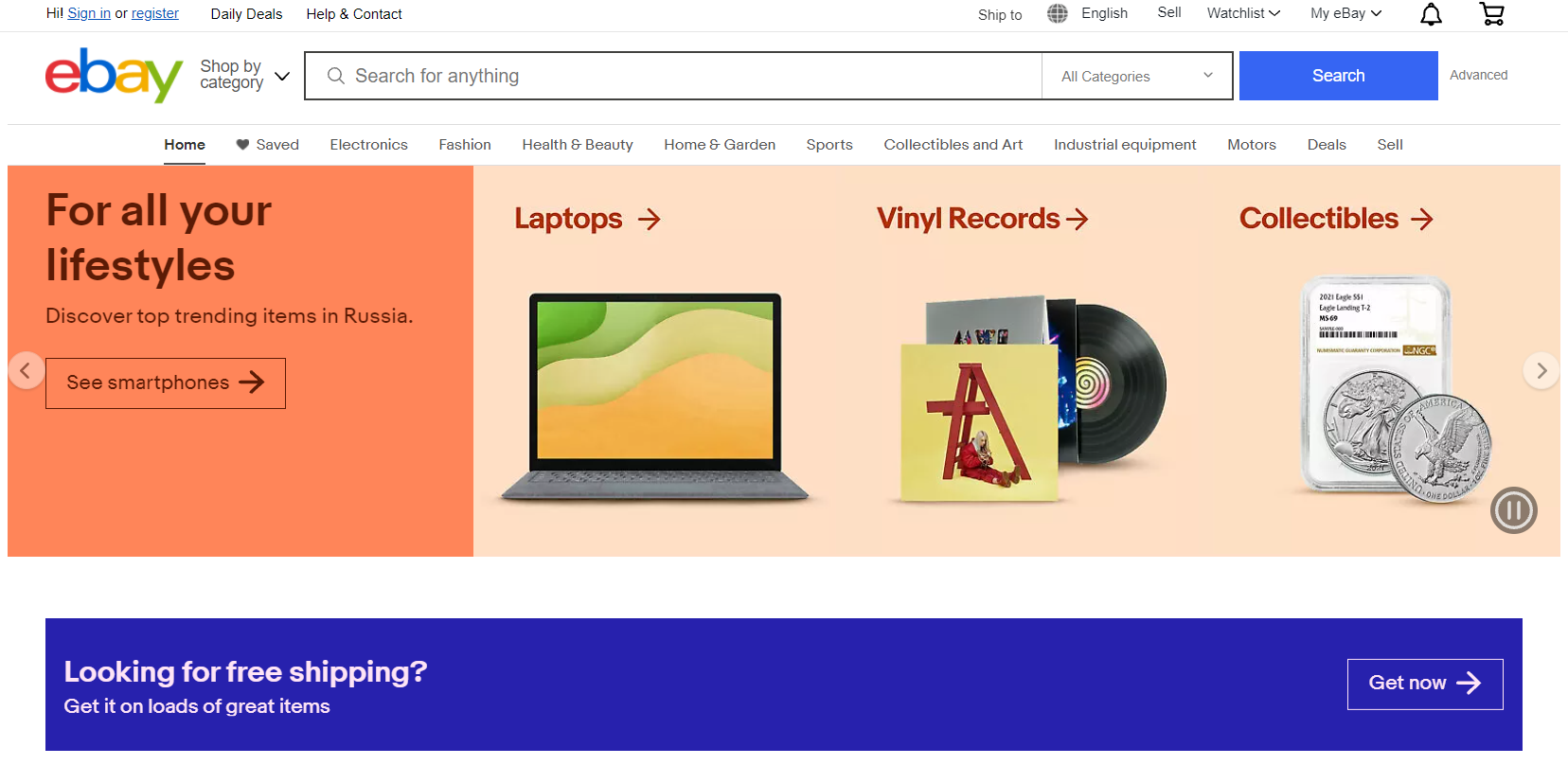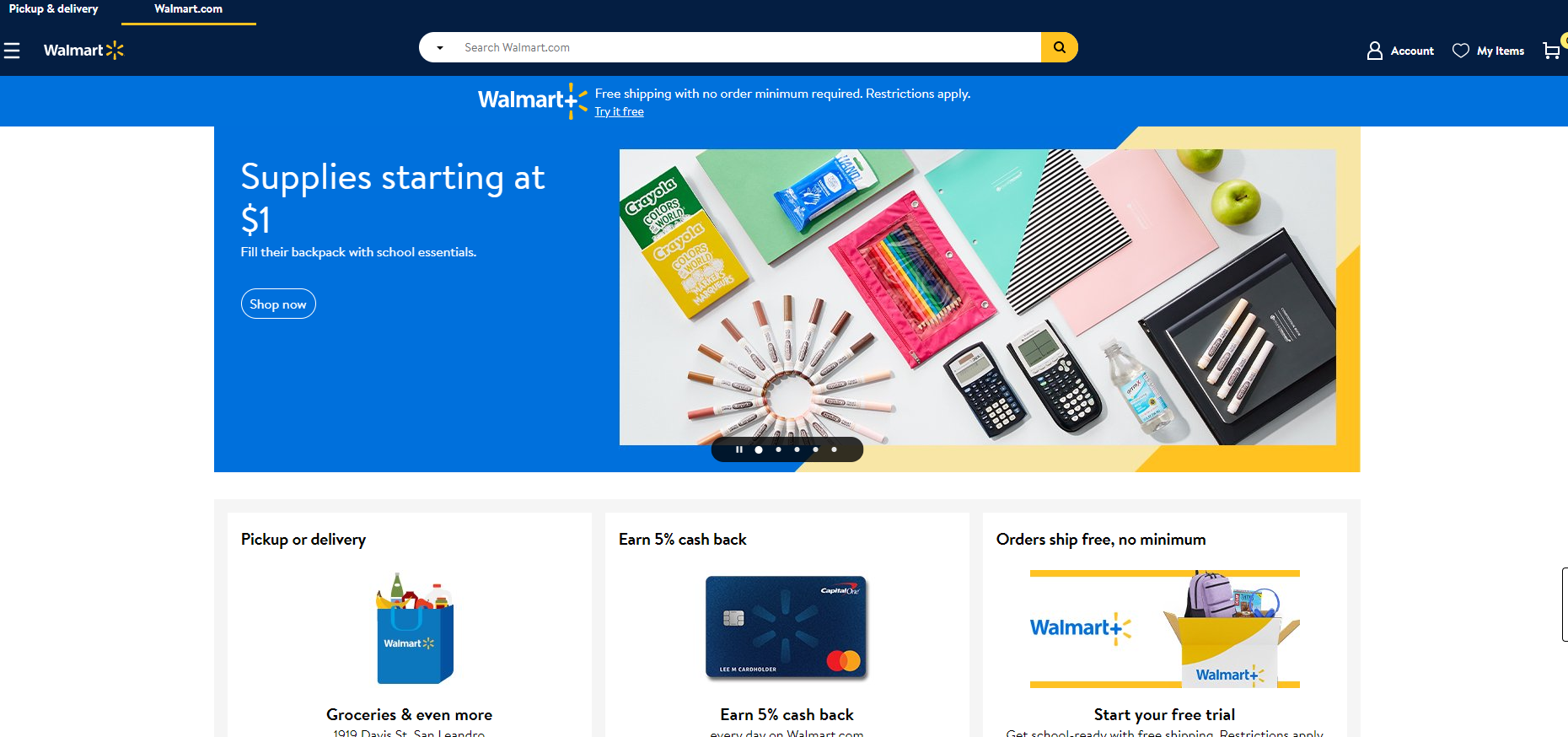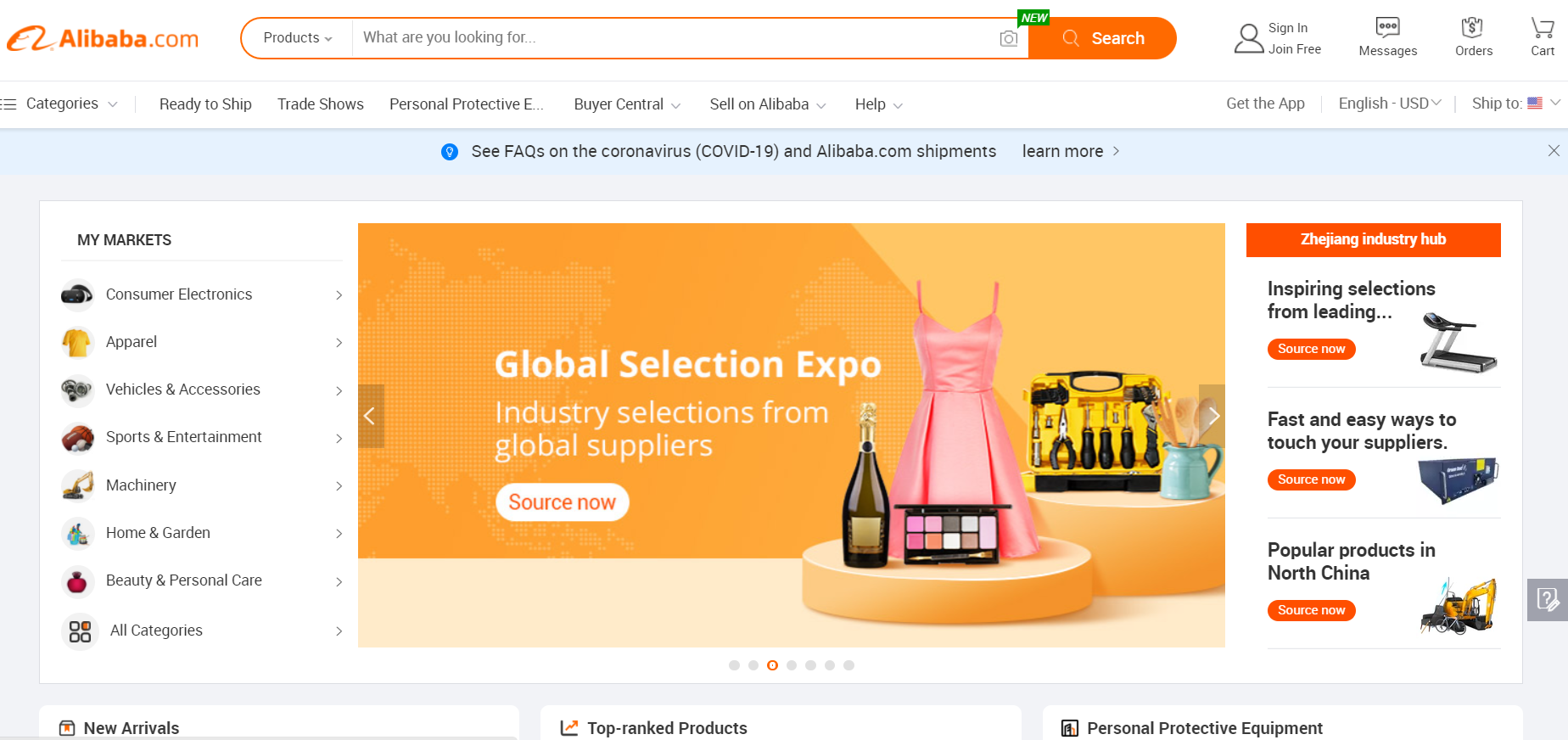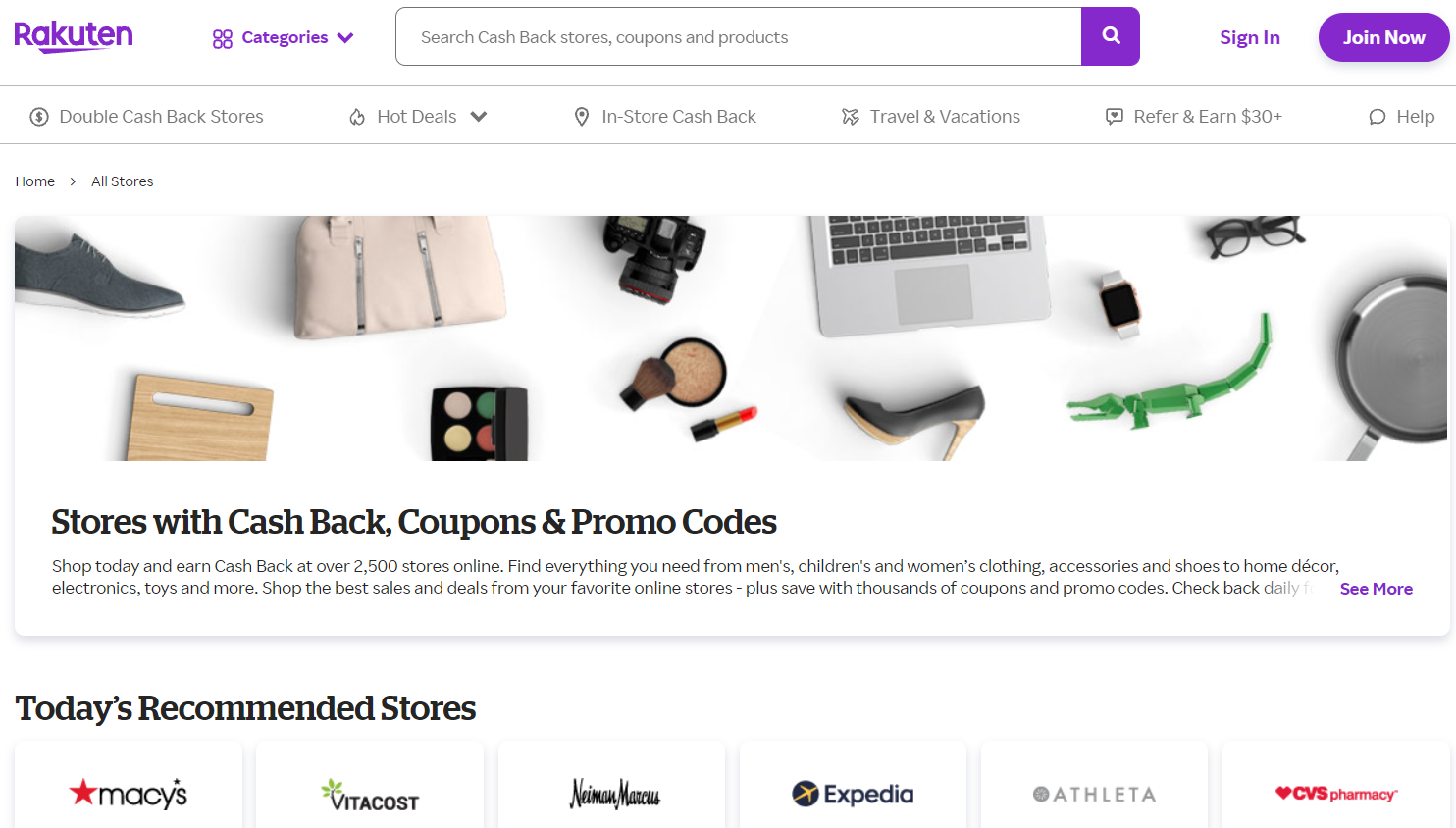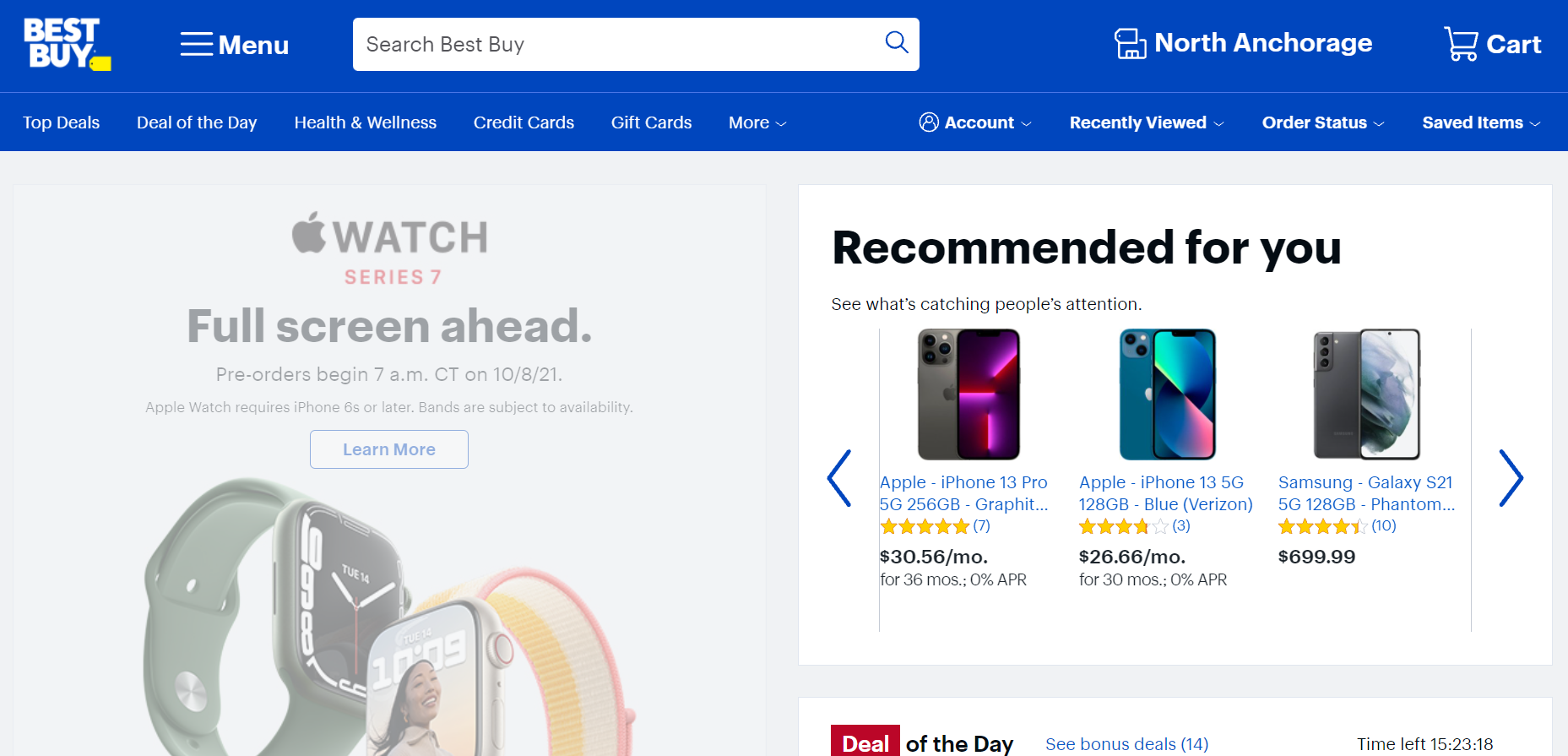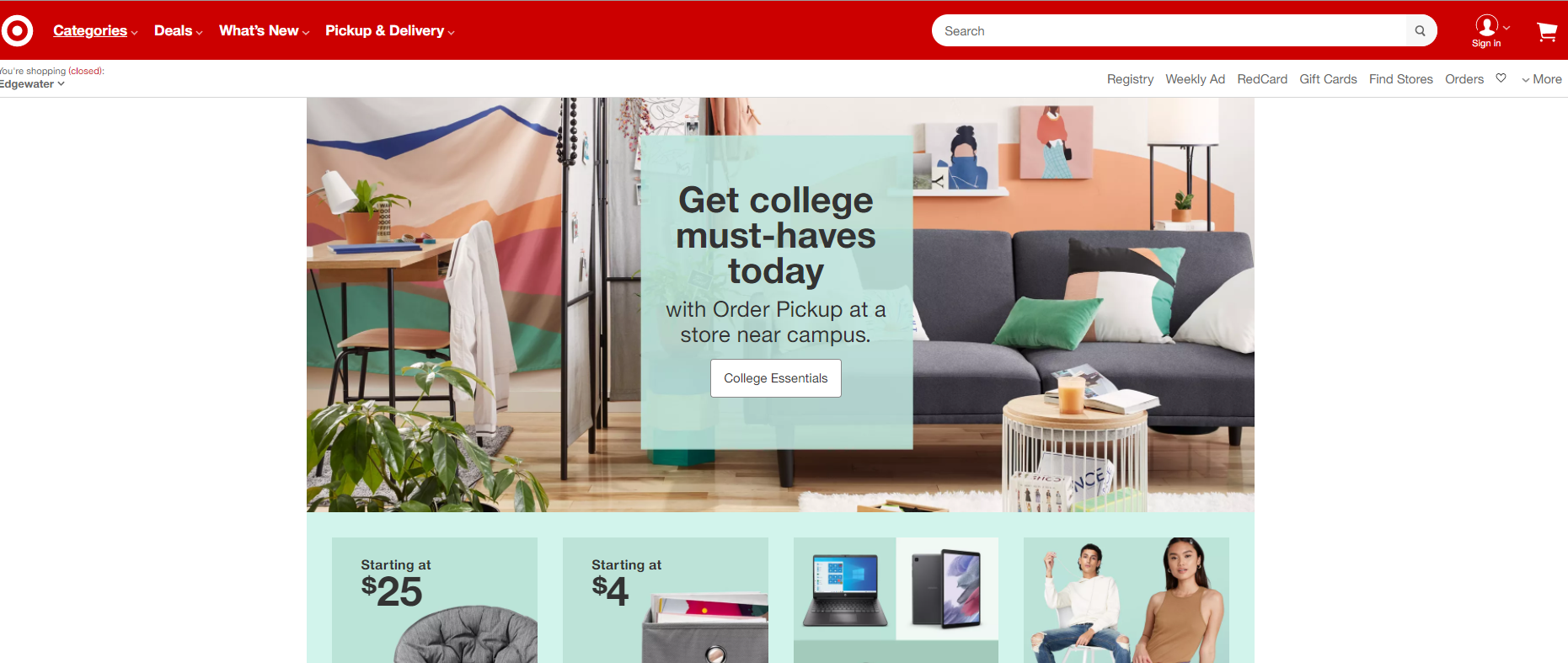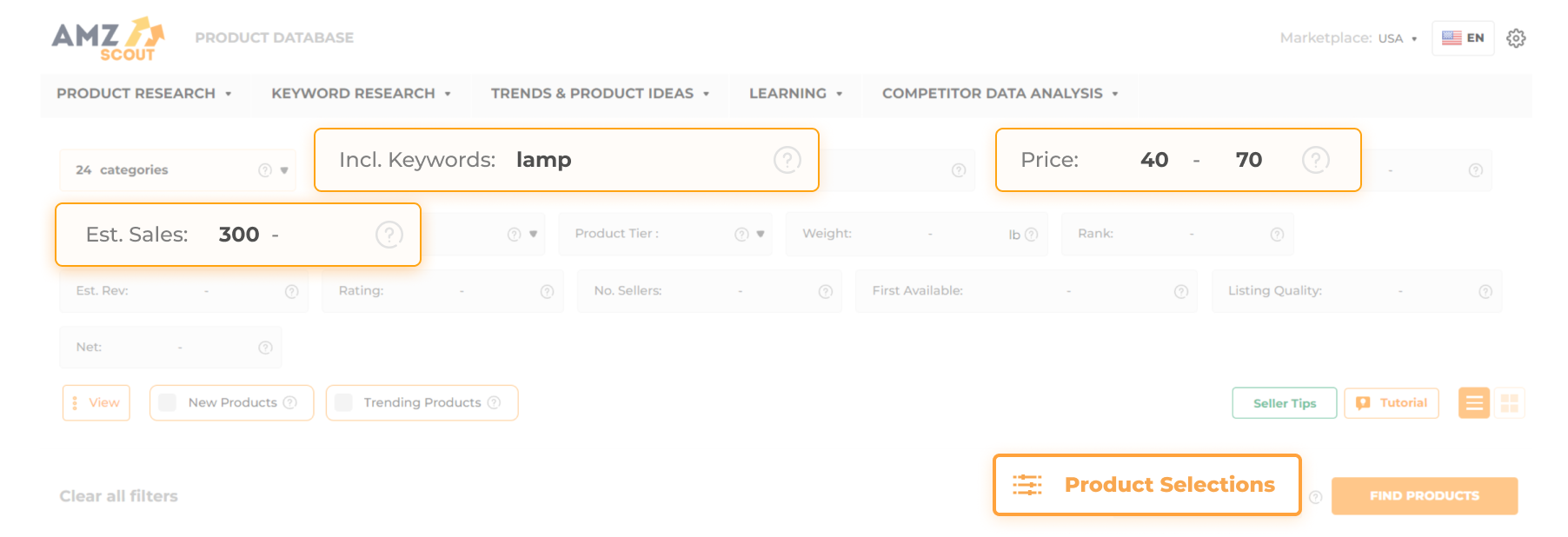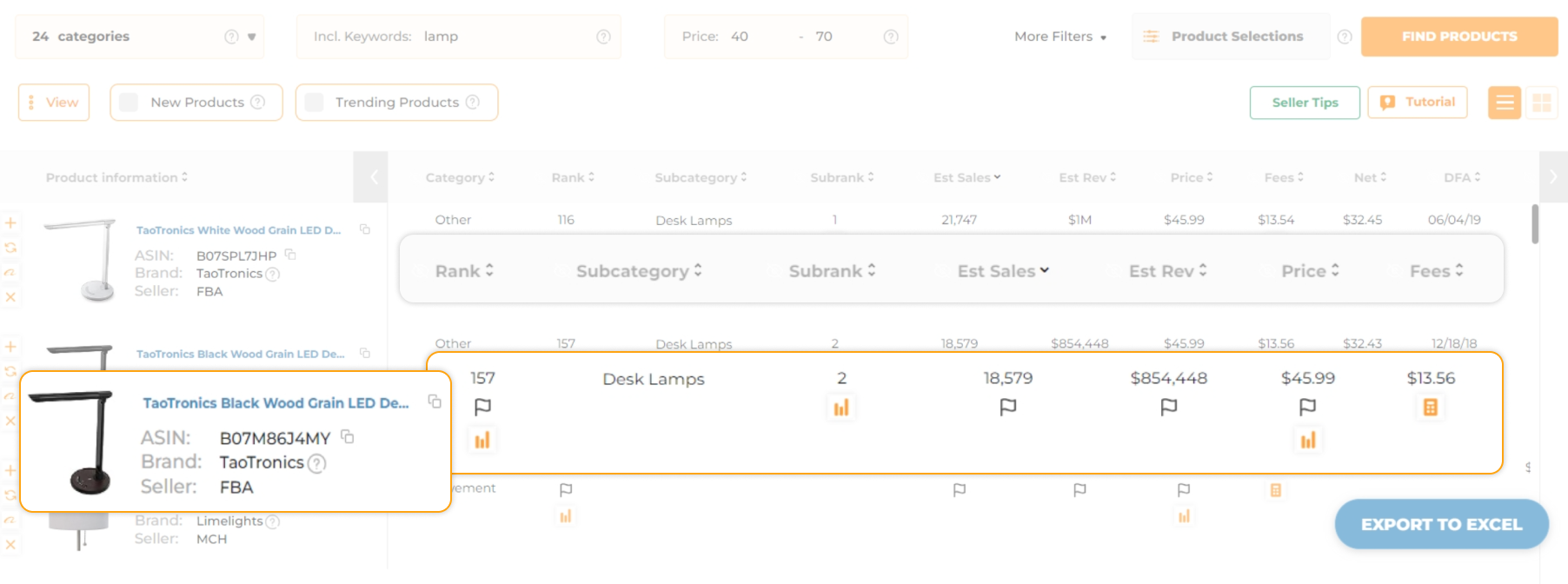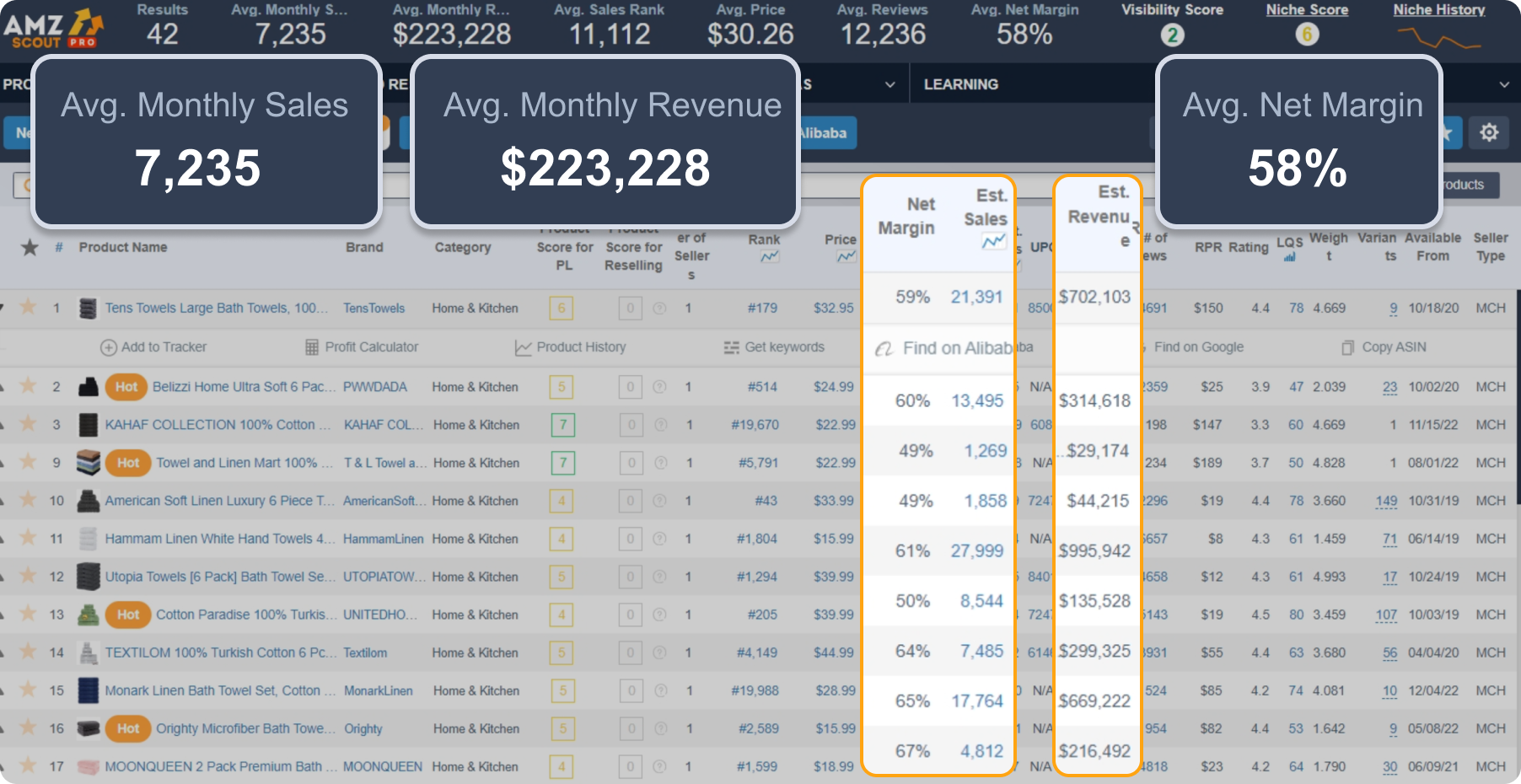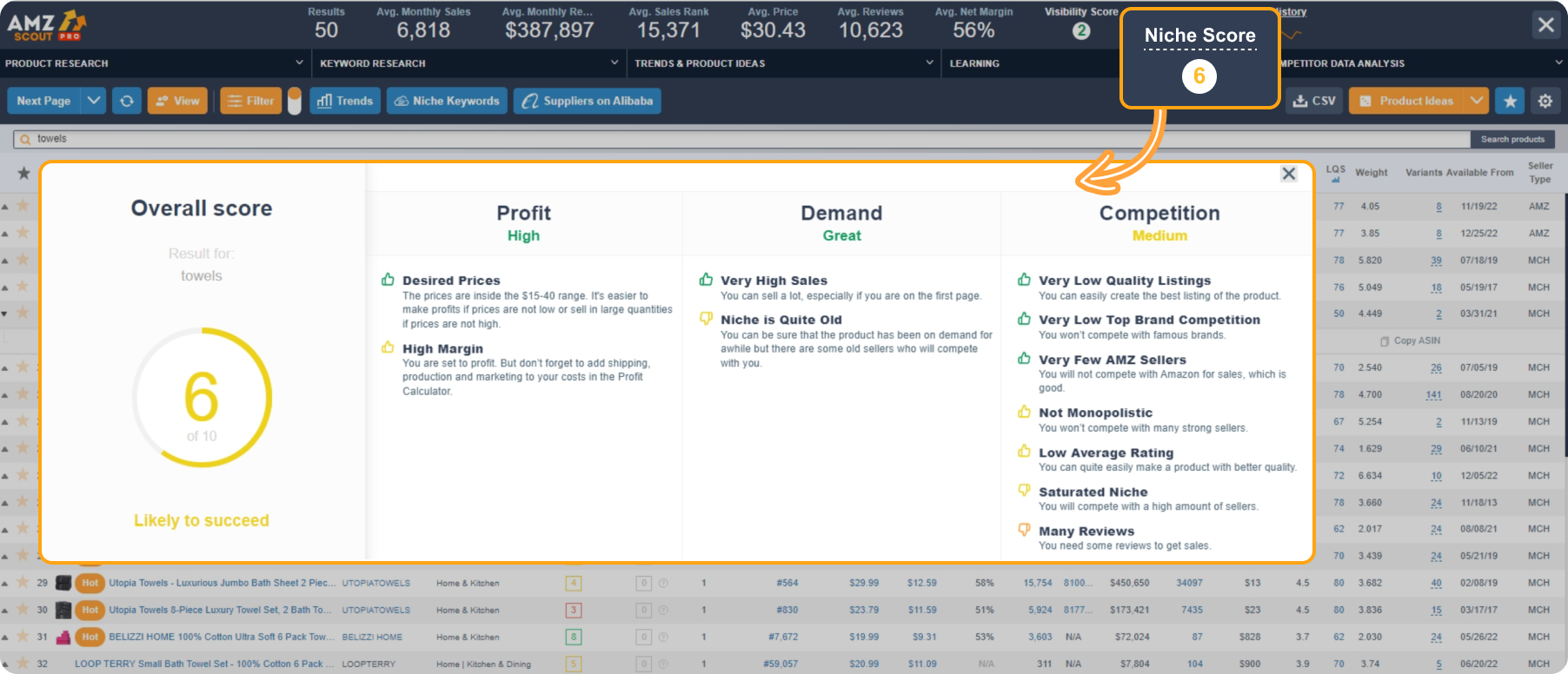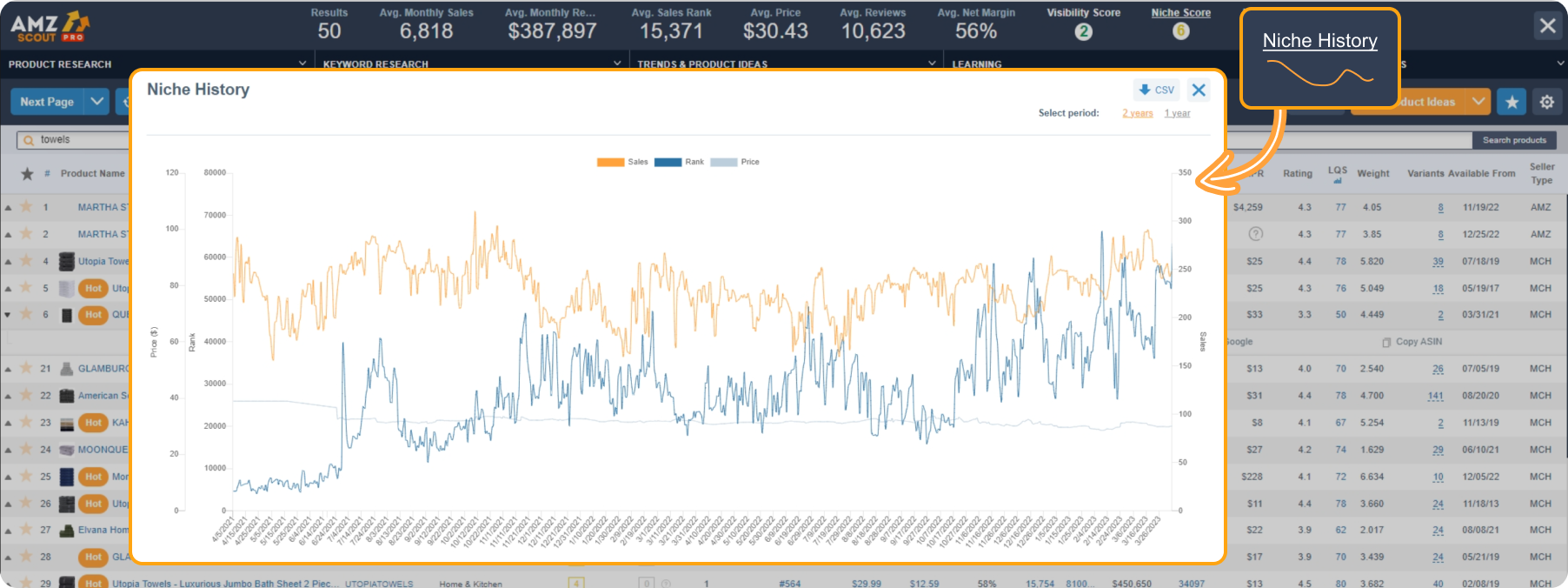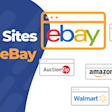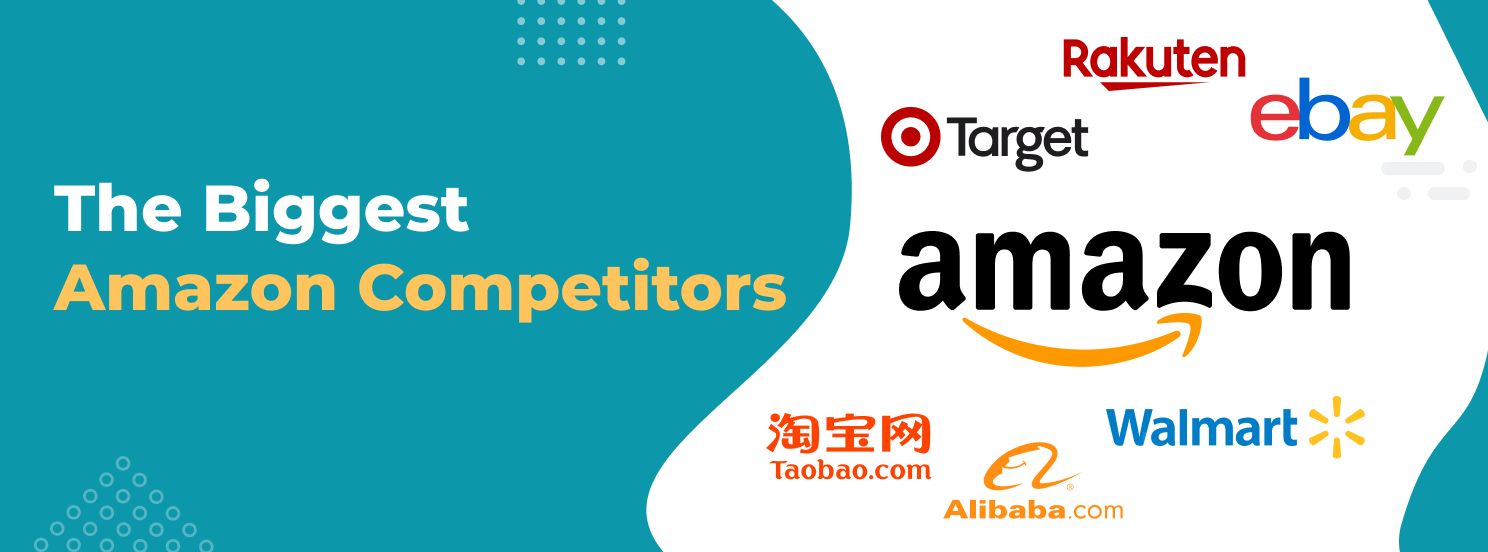
Top Amazon Competitors You Need To Know About
Amazon is the most customer-centric company in the world, dominating the eCommerce market. Amazon receives more than 2 billion website visitors each month. This traffic gives Amazon competitors an incredible challenge.
Who can even compete with Amazon? The answer is companies like Walmart, Alibaba, and Flipkart. Below, we will explore Amazon’s dominance and how others compete with Amazon.
Table of contents
Who Are Amazon’s Main Competitors?
Amazon’s main competitors all have ways of outdoing Amazon. Below are the different companies like Amazon, but with unique twists:
Walmart
Alibaba
Rakuten
Taobao
Flipkart
Best Buy
Target
AliExpress
Temu
Costco
OTTO
1. eBay
eBay, with its auction-based system, has established itself as a popular platform for user-driven commerce. Generating $3 billion in revenue and boasting 187 million users, eBay competes with Amazon by offering a unique auction system and a quicker account setup process.
Unlike Amazon, eBay doesn’t offer any fulfillment services. Instead this site depends on third-party vendors to manage transactions and shipping. While this limits its logistical capabilities, eBay remains a strong platform for sellers, especially those offering in-demand products. To see what’s trending now, check out our list of best-selling items on eBay.
2. Walmart
Another one of Amazon's primary competitors is Walmart. With over 10 thousand stores globally, Walmart has established itself as a dominant player in the retail industry. Additionally, Walmart has recently entered the eCommerce market with its rapidly expanding Walmart Marketplace platform, making it a formidable rival of Amazon.
Walmart also competes with Amazon in logistics, offering WFS (Walmart Fulfillment Services). Through expedited two and three-day shipping services, Amazon has something to think about. Among all companies on this list, Walmart is in the best position to overthrow Amazon.
3. Alibaba
Alibaba, known for its low prices, is a popular choice for private-label sellers looking to start their own Amazon businesses. It is estimated that by 2024, Alibaba will generate a staggering $3.5 trillion in revenue according to a recent analysis, making it a strong competitor against Amazon. Particularly in the Asian market, Alibaba offers remarkable competition and is one of their top eCommerce platforms.
Moreover, Alibaba has gained significant influence in the Chinese market through the use of automated delivery drones, which help to reduce busy road congestion.

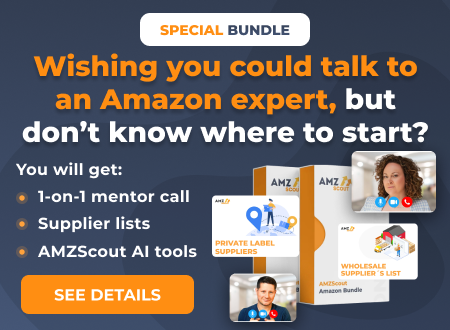
4. Rakuten (Japan)
Rakuten is a Japanese-based company known for its browser extension that alerts users to deals from their eCommerce partners. From 2018 to 2019 alone, this company earned over one trillion yen. Rakuten has established partnerships with major eCommerce companies, offering more than 70 services that rival Amazon's offerings in various areas.
However, despite being a significant competitor of Amazon, Rakuten's global presence is not as strong. In 2020, the company decided to withdraw from the worldwide market to focus on strengthening its local services. This strategic move was aimed to provide Amazon with more substantial competition within Japan, where Rakuten primarily operates. Loyalists of Rakuten can still utilize its Japan-based service, Rakuten Ichiban, to enjoy their preferred shopping experience.
5. Taobao (China)
Owned by Alibaba since 2003, Taobao is China's largest eCommerce provider. Taobao’s extensive user base plays a significant role in keeping costs low in China's marketplace. As a major competitor of Amazon, Taobao primarily operates within China due to its blacklisting in the US, primarily stemming from the prevalent issue of product counterfeiting on this platform.
6. Flipkart (India)
In 2018, Walmart purchased Flipkart, acknowledging it as India's leading domestic eCommerce platform. Similar to Walmart, Flipkart actively supports various Indian brands, fostering customer loyalty. While it ranks second to Amazon, Flipkart still boasts a massive 230 million monthly Indian visitors.
Flipkart is a significant rival of Amazon, and even hosts its own version of Prime Days known as “Big Billion Days”. Currently, Flipkart is offering enticing deals on popular smartphone brands such as Apple, Motorola, and Realme.
7. Best Buy
Best Buy has established itself as a leading competitor of Amazon in the realm of modern technology. With its strong brand recognition, this company has managed to successfully boost its revenue by $11 billion in recent years. Best Buy has a keen understanding of the retail sales landscape, particularly when it comes to tech products.
Not only does Best Buy give tough competition to Amazon in terms of sales, but it also excels in providing top-notch tech-based customer service. This company has recently introduced a subscription-based tech support service called Totaltech. Priced at $199.99/year, this service enables customers to enjoy 24-hour customer support, two years of product protection on most purchases, and exclusive members-only pricing.
8. Target
For over a century, Target has established a strong presence in the USA, known for both quality and trustworthiness, resulting in a remarkable $27 trillion in global retail sales. Although Target's 1,900 stores may seem limited in comparison to more competitive companies, the strength and influence of this powerhouse should not be underestimated. Being one of Amazon's primary competitors, Target stands as a formidable challenger in the retail industry.
Target also deals with far fewer employee-facing concerns than Amazon, offering to pay $2 per hour during the peak holiday season. Amazon takes a lot more PR heat when it comes to treating employees properly.
9. AliExpress
AliExpress, a subsidiary of Alibaba Group, is a global online retail platform known for offering low-cost products directly from Chinese manufacturers. With millions of listings and customers across over 220 countries, AliExpress stands out by enabling buyers to access factory-priced items, making it a favorite among budget-conscious shoppers and resellers.
Unlike Amazon, AliExpress does not maintain its own warehouses, and instead relies on third-party sellers for fulfillment. While shipping times can be long, the platform’s competitive prices, buyer protection policies, and wide variety of items give Amazon tough competition, especially in international and price-sensitive markets. If you're looking to spot opportunities, our guide to AliExpress bestsellers highlights the products shoppers buy most.
10. Temu
Temu, owned by PDD Holdings, is a rapidly growing eCommerce platform that offers ultra-low prices on a wide array of products sourced directly from Chinese manufacturers. Since its U.S. launch in 2022, Temu has quickly gained popularity, especially through aggressive social media advertising and gamified shopping features.
Although it’s still relatively new compared to Amazon, Temu’s competitive pricing and free shipping promotions attract cost-conscious consumers looking for deals. Its app-centric model, combined with an expanding global user base, makes Temu a quickly growing rival in the budget eCommerce space. If you’re interested in selling on Temu, check out our complete guide on how to sell on Temu to get started.
11. Costco
Costco is a membership-based wholesale club that’s grown to become one of the largest retail chains in the world, generating over $240 billion in annual revenue. While it’s traditionally known for its bulk products and in-store shopping experience, Costco’s online presence continues to grow and now includes a wide selection of electronics, home goods, and groceries.
Costco competes effectively with Amazon in terms of value, offering deep discounts through its members-only pricing model. Unlike Amazon, Costco emphasizes quality over speed, and is focused on customer loyalty, private-label brands (like Kirkland Signature), and a no-frills shopping approach that continues to resonate with millions of consumers.
12. OTTO
OTTO is one of the largest eCommerce companies in Germany, with roots going back to the 1940s. Operating primarily in Germany and surrounding European countries, OTTO offers millions of products across a variety of categories like fashion, electronics, and home furnishings, serving over 11 million active customers annually.
OTTO differentiates itself by offering flexible payment options and a curated product selection with a strong focus on sustainability. While its reach is more regional compared to Amazon, OTTO holds a dominant position in Germany’s online retail market, making it a key competitor in the European eCommerce landscape.
What Is Amazon’s Competitive Advantage?
Few stores can compete with Amazon. They offer an all-in-one solution as an online marketplace.
You can feasibly make money on Amazon from limited funds, which competitors cannot hope to match. Below are some other ways Amazon remains competitive:
A Wide Selection of Products
Amazon has 32 product categories with numerous subcategories that offer over 350 million products across the marketplace. Almost 340 million of these items come from third-party sellers. Also, nearly two million small businesses support their platform.
The number of subcategories enables new sellers to have higher chances to rank. It also helps customers find products that they need with greater ease.
Powerful Tools for Product Research
Another factor that makes Amazon stand out from other online marketplaces is the number of tools available for sellers. The marketplace provides its own array of tools and there are also many amazon business tools offered by third parties. These tools help sellers with everything from product research to uncovering new keywords.
For instance, with AMZScout Product Database, you can quickly find profitable ideas for Amazon products. Below are the steps to using the tool for product research.
1. Open the AMZScout Product Database
2. Start a free trial. If you are new to the platform, you’ll see a sign-up form. Complete the form to begin the free trial.
3. Choose product criteria. Use the search filters to set your product criteria. For example, you can filter products by sales, rating, category, and more. If you aren’t sure which filters to use, start with one of the pre-made Product Selections set of filters.
4. Review your results. Click Find Products to generate a list of matching products.
5. Save interesting product ideas to check with PRO Extension.
The Product Database will help you discover potential product ideas but you’ll need to perform additional product research if you want to maximize your chances of success. The individual products that you find may be profitable but that doesn’t mean all products in the category will be the same.
To get a clear understanding of a product’s market, you need to look at its demand, competition, and other factors. You can analyze all these important metrics using the PRO Extension. Below are the steps for using the tool to validate product ideas.
1. Download the AMZScout PRO Extension.
2. Open the PRO Extension
Amazon will open automatically after the extension is installed.
Begin your free trial. If you’re new to the platform you will be taken to a sign-up form. Fill out the form to start the trial.
Look up a product or niche that you discover with the Database.
Once the results show, click the AMZScout icon in the lower-left corner of the window to open the extension.
3. Review profitability for product and niche. Check important niche-level metrics like estimated sales, and average net margin at the top of the browser. Then, look at the metrics for single products in the table below.
4. Find the estimated monthly profit.
Click the row for an interesting product to open a new dropdown.
Select Profit Calculator.
Enter the necessary data: price, product cost, etc.
Check the estimated monthly profit.
5. Review the niche demand. Click Niche Score to see a breakdown of competition and demand for the entire niche.
6. Look for consistent demand. Click Niche History to make sure demand is consistent throughout the year.
Beyond finding good products, Amazon seller tools help you perform a variety of other tasks including keyword research and product and sales tracking. It is hard to find this functionality as a seller on other marketplaces which is why Amazon is such an attractive option for third-party sellers.
Prime Shipping Increases Sales Potential
With one-day shipping on many products, Amazon dominates logistics. Over 200 million people are enrolled in Prime.
Prime enables shoppers to utilize one or two-day shipping. This powerful shipping tool meets much of the immediate needs that customers tend to have.
While it might not be the instant gratification of just taking it home, many people shop at home knowing that Amazon will deliver products the following day. This feature dramatically increases your conversion rate.
Amazon FBA (Fulfillment By Amazon) means you don’t have to rely on your shipping and warehousing to get it done. That means you can leverage Amazon’s robust logistical chain.
Great for Entry-Level Sellers To Start
Amazon sells about 1.6 million packages, primarily due to the high number of third-party sellers. If you have been part of an eCommerce business, Amazon is the most accessible place to start.
The number has risen 50% since 2017, making it easily one of the fastest-growing online marketplaces in the world. Part of this comes from the simple sign-in process, which we give a shortened version below.
These steps below give you a general idea of the process needed to sign up:
Have your Driver’s License
Have a personal address and SSN ready
Prove you live at your address with a postcard they ship to you
Set aside about 30 minutes of one day to verify your identity through a video call
Other companies require you to have an established business, an EIN, and a specific business address. On Amazon, anyone can start a business.
Robust Advertising Features
With Amazon Web Services and Amazon Seller Central, competing for the top slot is much more approachable. Whether you prefer display advertising, influencer advertising, or video-based ads, Amazon is in a unique position to provide all.
Amazon’s affiliate and advertising networks are so robust that you can easily track the entire buyer’s journey from a single position. This advertising platform outranks almost all other companies when it comes to tech.
Also, Amazon has a bidding platform that is built to save you money. So if the second-highest bid is ten cents below you, you will be one cent above that bid.
Amazon also owns numerous websites for you to target. So retargeting efforts when someone initially visits your listing are comparatively simple to other companies.
Amazon Controls eCommerce
Amazon currently holds almost 40% of the eCommerce market. This leaves 60% to all remaining competitors (Walmart, Target, Shopify, etc.).
With such a massive piece of the pie, Amazon trounces the competition when it comes to effectiveness. The piece is getting bigger, expected to be 50% by the end of this year.
There is no online marketplace with the same amount of dominance that Amazon has. Despite best efforts, all of the competition we list below lags behind Amazon in their respective categories.
Amazon is one of the top online providers of retail products. As a business, it is hard to compete with them. Still, Amazon has some intense competition to work against.
Other Competitors Against Amazon
Amazon has spent the past several years expanding its online sales division. However, it is not limited to only being an online retailer; it also offers alternative services.
The most popular of its services include Amazon Prime Video, Amazon Music, and Kindle. In offering video-based services, it diversifies Amazon offerings.
It also enables Amazon to offer better advertising services. Amazon proves itself as a one-stop shop for almost anything you might need.
Below, we will address some of the biggest competition Amazon has on this list.
Amazon’s Video Streaming Competition
Amazon has numerous video streaming services to compete against. The following ten thousand words could be devoted to them.
Amazon Prime Video enables users to view videos on demand, enabling viewership from almost any mobile device, smart television, and game console. Below is a list of competitors:
Netflix
Netflix specializes as a streaming service, generating nearly $25 billion in revenue. Amazon Prime Video falls short by almost 80 million when counting subscribers. Netflix heavily outperforms Amazon regarding video streaming services.
AppleTV
In 2020, AppleTV boasted a solid 40 million users on its platform. This might be short when compared to Amazon; Apple owns a hefty portion of the phone market. This competitive advantage is something Amazon does not have, as there is no Amazon phone plan.
Hulu
Hulu has almost 100 million subscribers, increasing nearly 6% from the prior year. To improve its competitiveness, it works with companies like Disney to push its offerings. Hulu also offers live TV, which is something that Amazon does not have.
YouTube TV
YouTube is the most-watched video platform in the world with two billion users. However, most people don’t subscribe to it because of alternative media. Google has a major chance to turn this into a hit, but it does need some work.
Amazon’s Music Streaming Competition
If you prefer audio entertainment, Amazon music is another option. However, it is a bit different when compared to Amazon Prime Video.
You can use Amazon music as a way to purchase music and download those files on your computer. You can also use them to view unlimited music through a subscription-based service.
Apple Music
Apple Music currently has over 70 million subscribers, outperforming Amazon by 20 million. As a company that integrates this platform into their Apple iOS devices, it is easy to see how Apple trounces most competitors. Apple Music has only been around since 2015, growing at an intense rate.
Spotify
Spotify is smaller than Apple in the US but more significant than Apple in Europe. It has over 150 million paid users with 199 million ad-supported users. Spotify has been around since 2008, consistently reporting operating losses. Spotify is an unusual case but is worth keeping an eye on.
YouTube Music
Before music streaming was a thing, downloading music from YouTube was your choice. However, YouTube music sought this as a solution, enabling its users to take advantage of the audio of videos. As of 2020, YouTube Music’s users were 50 million.
Amazon’s Book Competition
Amazon was initially developed to be a bookstore. Amazon is still one of the companies in the world to buy books.
Amazon’s book services are through Kindle, Audible, and its self-publishing platform. Anyone can publish a book on Amazon, but the competitors below remind us of other options.
Google Play Books
Google is one of the largest companies in the world. However, one of the most searched topics regarding this service is asking if the service is alive or not. It ranks better in non-US countries in the Google Play Store, ranking #3 in Canada, France, and the UK.
Kobo Books
Kobo Books, owned by the well-known company Rakuten, has about 150 thousand subscribers as of 2018. Kobo books have some potential, but it will be up to Rakuten to develop them. Right now, it is a shadow of what Amazon offers.
Scribd
Scribd has an opening publishing platform that boasts over 60 million documents. As of 2020, it surpassed 1 million subscribers with an effective brand campaign. The company also supports audiobooks, making them one of Amazon’s most significant potential competitors.
Conclusion
When it comes to finding a direct competitor for Amazon, that’s challenging. While the closest competition is Walmart, they are still much weaker regarding eCommerce. Ten thousand stores quire much more things to worry about for Walmart.
Amazon has the greatest potential for new sellers to make a profit. You do not have to start a business to start selling on Amazon. All you need to do is prove that you are a person. Similar companies to Amazon do not offer this ease of use.
To leverage Amazon’s nearly three billion visitors, you must start today. You will never know how far you can leverage Amazon if you do not try.
